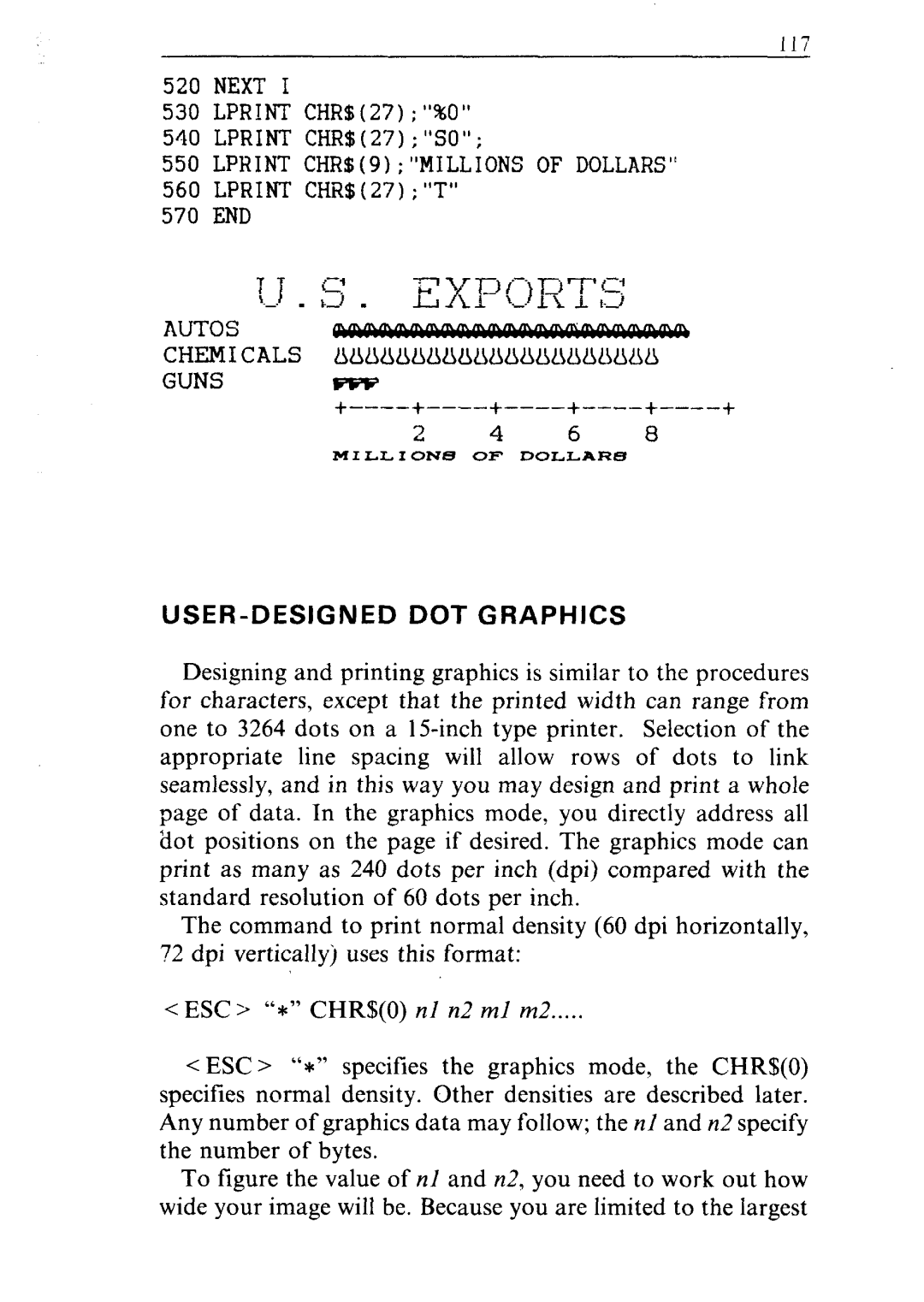
520 NEXT I
530 LPRlNT CHR$(27);"%0"
540 LPRINT CHR$(27);"SO";
550 LPRINT CHR$(9);"MILLIONSOF DOLLARS"
560 LPRINT CHR$(27);"T"
570END
AUTOS
CHEMICALS ~~~~~~~~~~~~~~~~~~~~~~
GUNS
+ | ||||
| 2 | 4 | 6 | 8 |
MILLIONS |
| OF’ | DOLLARS |
|
USER-DESIGNED DOT GRAPHICS
Designing and printing graphics is similar to the procedures for characters, except that the printed width can range from one to 3264 dots on a 15inch type printer. Selection of the
appropriate line spacing will allow rows of dots to link seamlessly, and in this way you may design and print a whole page of data. In the graphics mode, you directly address all dot positions on the page if desired. The graphics mode can print as many as 240 dots per inch (dpi) compared with the standard resolution of 60 dots per inch.
The command to print normal density (60 dpi horizontally,
72 dpi verticallyj uses this format:
<ESC> “*” CHR$(O) nl n2 ml m2.....
<ESC > “zic” specifies the graphics mode, the CHR$(O) specifies normal density. Other densities are described later. Any number of graphics data may follow; the nl and n2 specify the number of bytes.
To figure the value of nl and n2, you need to work out how wide your image will be. Because you are limited to the largest
